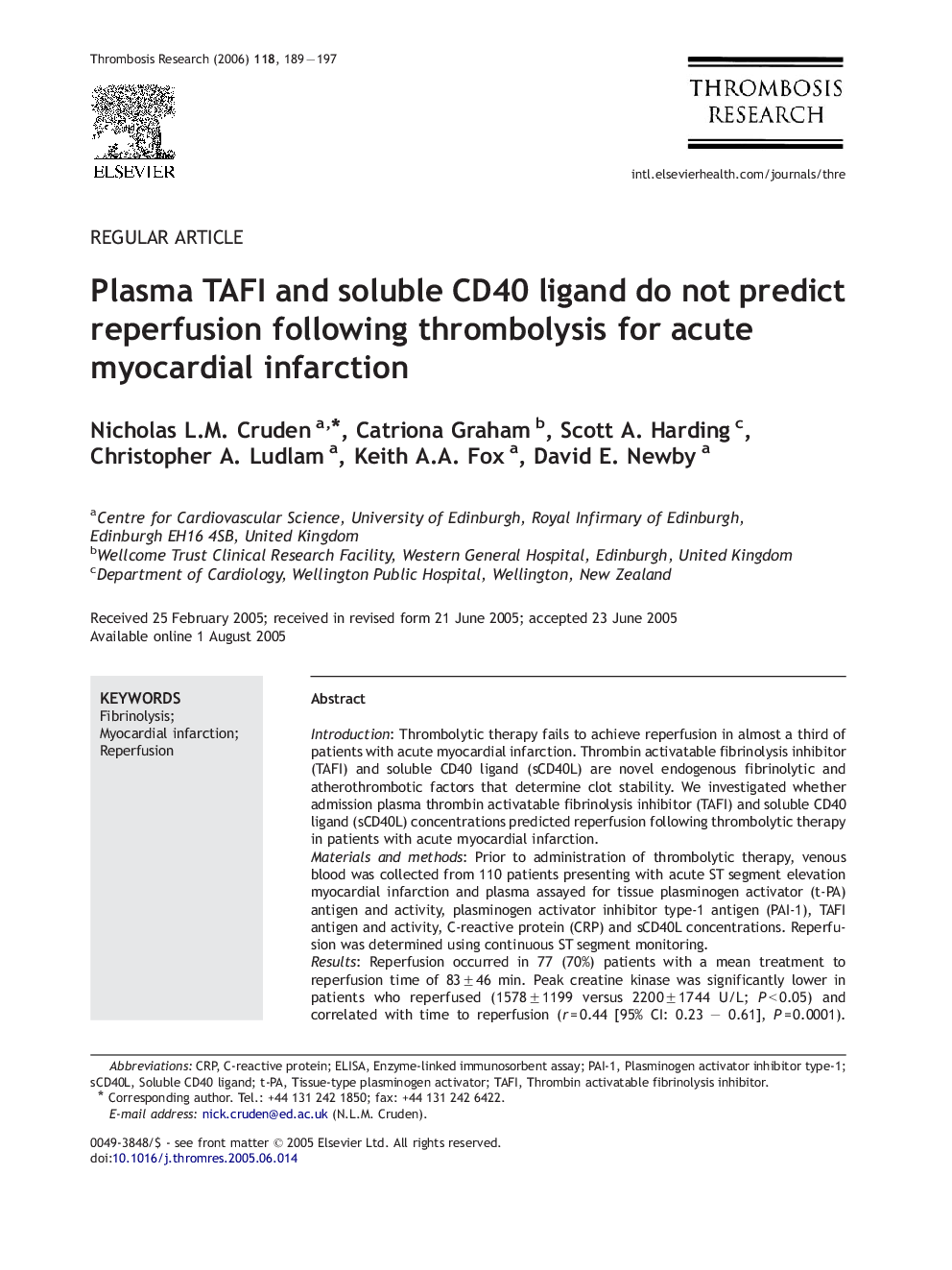| Article ID | Journal | Published Year | Pages | File Type |
|---|---|---|---|---|
| 3030352 | Thrombosis Research | 2006 | 9 Pages |
IntroductionThrombolytic therapy fails to achieve reperfusion in almost a third of patients with acute myocardial infarction. Thrombin activatable fibrinolysis inhibitor (TAFI) and soluble CD40 ligand (sCD40L) are novel endogenous fibrinolytic and atherothrombotic factors that determine clot stability. We investigated whether admission plasma thrombin activatable fibrinolysis inhibitor (TAFI) and soluble CD40 ligand (sCD40L) concentrations predicted reperfusion following thrombolytic therapy in patients with acute myocardial infarction.Materials and methodsPrior to administration of thrombolytic therapy, venous blood was collected from 110 patients presenting with acute ST segment elevation myocardial infarction and plasma assayed for tissue plasminogen activator (t-PA) antigen and activity, plasminogen activator inhibitor type-1 antigen (PAI-1), TAFI antigen and activity, C-reactive protein (CRP) and sCD40L concentrations. Reperfusion was determined using continuous ST segment monitoring.ResultsReperfusion occurred in 77 (70%) patients with a mean treatment to reperfusion time of 83 ± 46 min. Peak creatine kinase was significantly lower in patients who reperfused (1578 ± 1199 versus 2200 ± 1744 U/L; P < 0.05) and correlated with time to reperfusion (r = 0.44 [95% CI: 0.23 – 0.61], P = 0.0001). There was a modest correlation between plasma TAFI antigen and activity (r = 0.3 [95% CI: 0.04 – 0.53]; P < 0.05). There were no significant associations between coronary reperfusion and plasma concentrations of t-PA, PAI-1, TAFI, CRP or sCD40L.ConclusionsSystemic plasma TAFI, sCD40L and CRP concentrations do not predict reperfusion in patients receiving thrombolytic therapy for acute ST elevation myocardial infarction.
